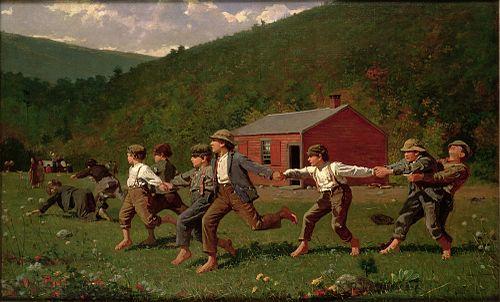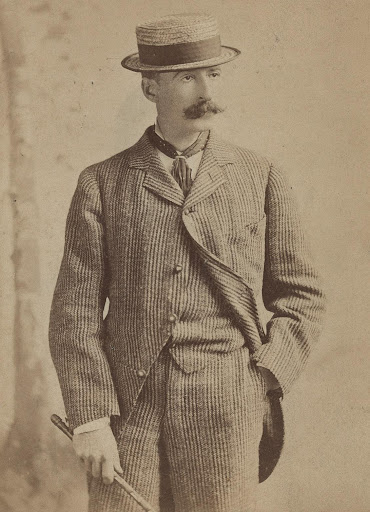The captivating brushstrokes of Winslow Homer have left an indelible mark on the art world. Homer was an American painter and illustrator whose works were highly acclaimed during his lifetime and remain highly sought-after today. He was known for his masterful use of light and shadow, his ability to capture emotion in his paintings, and his skill at depicting the natural world.
Early Life and Career
Winslow Homer was born in Boston, Massachusetts, on February 24, 1836, to a family of English ancestry. Homer showed an early interest in art, and at the age of 19, he began working as an apprentice in a lithography studio.
Homer’s apprenticeship was short-lived, however, and he soon began working as a freelance illustrator for magazines such as Harper’s Weekly and Frank Leslie’s Illustrated Newspaper. During this time, he also began to paint, and his work quickly gained recognition.
Homer’s early paintings were influenced by the Hudson River School, a group of American landscape painters who were popular in the mid-19th century. He painted landscapes and seascapes, often using dramatic lighting and bold colors to create a sense of drama and emotion.
In 1861, at the outbreak of the American Civil War, Homer began working as a war correspondent for Harper’s Weekly. He traveled with the Union Army, documenting the war through his paintings and illustrations. His war work was highly acclaimed and helped establish his reputation as a talented artist.
After the war, Homer traveled to Paris, where he studied painting for a brief period. He was influenced by the work of the French Realists, who were known for their attention to detail and their focus on contemporary life. Homer’s time in Paris had a profound impact on his work, and he returned to the United States with a renewed focus on realism.
In the years that followed, Homer continued to paint and illustrate, producing some of his most famous works. His paintings often depicted figures in the natural world, exploring themes of isolation, struggle, and survival. He was also known for his ability to capture the mood of his subjects, using light and color to convey emotion.
In the late 1870s, Homer began to focus more on painting, and his work became increasingly influenced by the Impressionists. He began using looser brushstrokes and brighter colors, and his paintings took on a more vibrant, energetic quality.
Throughout his career, Winslow Homer remained committed to his art, constantly experimenting and pushing the boundaries of his own creativity. His early life and career were marked by a determination to succeed and a passion for art, qualities that would define his work and legacy for generations to come.
Homer’s Artistic Style
Winslow Homer’s artistic style was characterized by his attention to detail, his masterful use of light and shadow, and his ability to capture the mood of his subjects. He was known for his bold brushstrokes and vivid colors, which gave his paintings a sense of energy and movement.

Homer’s early work was influenced by the Hudson River School, a group of American landscape painters who were popular in the mid-19th century. He painted landscapes and seascapes, often using dramatic lighting and bold colors to create a sense of drama and emotion. One of his most famous early paintings is “Snap the Whip,” which depicts a group of children playing in a field.
As Homer’s career progressed, he began to explore more complex themes and subjects. He painted figures in the natural world, exploring themes of isolation, struggle, and survival. One of his most famous paintings, “The Gulf Stream,” depicts a lone sailor struggling against the forces of nature. The painting is a masterpiece of color and light, with the deep blues of the ocean contrasting with the warm yellows of the sky. The sailor’s face is twisted in agony as he battles the waves, and the painting conveys a sense of both isolation and courage.

Homer’s use of color was particularly striking, and he often used bright, bold colors to create a sense of energy and movement in his paintings. In the late 1870s, he began to experiment with Impressionism, using looser brushstrokes and brighter colors to create a more vibrant, energetic quality in his work.
One of the hallmarks of Homer’s style was his ability to capture the mood of his subjects. He was known for his ability to convey emotion through his paintings, using light and color to create a sense of atmosphere and mood. His paintings often had a melancholic quality, with figures caught in moments of quiet reflection or struggle.
Homer’s attention to detail was also a defining characteristic of his style. He was a master at capturing the texture and feel of his subjects, whether it was the roughness of a tree trunk or the smoothness of a seashell. He used this attention to detail to create a sense of realism in his paintings, and his work had a profound impact on the development of American Realism.
Legacy and Influence
Winslow Homer’s work has had a profound impact on the art world, both during his lifetime and in the years since his death. His paintings and illustrations were highly acclaimed during the late 19th century, and he was considered one of America’s greatest artists. Today, his work is still highly sought-after, and his paintings are housed in some of the world’s most prestigious museums.
Homer’s influence can be seen in the work of many later artists, including Edward Hopper and Andrew Wyeth. His use of bold brushstrokes and vivid colors inspired the Impressionists, and his attention to detail and ability to capture emotion influenced the Realists.
Conclusion
The captivating brushstrokes of Winslow Homer continue to enchant art lovers and historians alike. Homer’s ability to capture the essence of human emotion and the natural world in his paintings is unparalleled. His works offer a glimpse into a bygone era and the changing landscape of American society in the late 19th century.
Homer’s artistic evolution, from his early days as a commercial illustrator to his later years as a masterful watercolorist, reflects the broader shifts in the art world during his lifetime. His use of color, composition, and texture demonstrate a keen eye for detail and an understanding of the power of visual storytelling.
But perhaps what makes Homer’s work truly remarkable is its timelessness. Despite being created over a century ago, his paintings still resonate with audiences today. The images he created of fishermen, hunters, and other working-class Americans capture the rugged individualism and self-reliance that has long been a hallmark of American culture.
Moreover, Homer’s works offer a meditation on the natural world and humanity’s place within it. His depictions of the sea, the mountains, and the wilderness evoke a sense of wonder and awe that transcends time and place. In this sense, Homer’s paintings can be seen as a meditation on the timeless themes of life, death, and the human experience.
Overall, the captivating brushstrokes of Winslow Homer continue to fascinate and inspire art lovers and historians today. His ability to capture the beauty and complexity of the natural world, as well as the human experience, is a testament to his talent and enduring legacy in the world of art.





